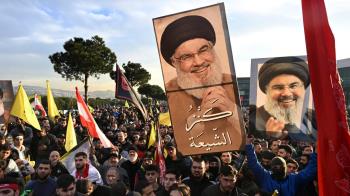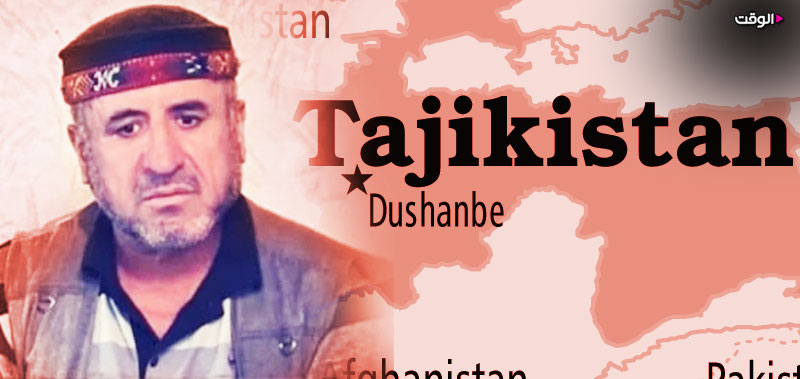Alwaght- Tajikistan sources reported that Shiite leader Mamadbakir Mamadbakirov was killed in the capital of Goro-Badakhshan autonomous region Khorog by gunmen. The senior Shiite leader's assassination comes a few days after unrest in the city for which the government held Mamadbakirov responsible.
He was reportedly assassinated by gunmen but official resources have so far declined to react and so it is not clear who ordered the assassination.
Kharog has seen protests over the past few weeks against the dismissal of the city's governor, but government forces have cracked down on protesters, killing and injuring dozens. The Gorno-Badakhshan autonomous region witnessed a five-year civil war after the collapse of the Soviet Union, but it is mostly calm now.
Mamadbakirov's assassination came exactly a week after dozens of youths in Goro-Badakhshan stormed with arms a courthouse, and the interior ministry confirmed that one was killed and three police officers were injured in the unrest. The intriguing point about the unrest is that the security officials blamed Mamadbakirov for the incident and described him as the leader of the Khorog "criminal group", but he called the charges against him "baseless." Therefore, if the involvement of the security forces in his assassination is proven, this not only will not help resolve the disputes between the two sides but also deteriorate the security situation in the region.
In Gorno-Badakhshan autonomous region, also known as Pamir and has a predominantly Pamiri-speaking ethnic group, special conditions are dominant. This region has its own language, which is different from the Tajik language, and most of its population are Shiites. The region has been witnessing disputes with the central government for years with occasional clashes between the two sides, to an extent that the government declared the region the most disputed part of the country, with highest possibility of sliding in conflicts. This pessimistic attitude of the government towards this region caused discontentment of the Shiites.
Shiites of Tajikistan
Tajikistan's Shiites make up a very small population in the country. All of them live in Badakhshan province and this shows that the central government has concentrated all Shiites in order to control them. Decades-long conflict with the central government also confirms that the country's Shiites are in dire straits. According to Tajik observers, it bears bad consequences for people to publicize their Shiite faith in Tajikistan. That is why they mostly hide their faith.
Wahhabism also poses dangers to the Shiites in Tajikistan and as they say, they have no life and financial security. The Wahhabis mainly go among public as Hanafi Sunnis and when they gain public trust, they attack the Shiite Muslims. They also infiltrate the Shiites and locate their workplaces. They mainly look for their leaders and assassinate them. That is why most of the Shiites hide their religious identity and conduct their religious rituals secretly for the fear of the Wahhabis radicalists who toughly deal with them and even kill them.
However, despite the great influence of the Wahhabis, their propaganda against the Shiites and their inhuman actions have caused the people to become more curious and inclined towards the Shiite faith.
"Tajikistan does not accept us as Shiites and rejects us, so when we do cultural and propaganda work, we face many difficulties. It is easy for friends, family and relatives to speak freely," a senior Tajik expert said of the hardships for Shiites, adding:" But for others, we must introduce ourselves as followers of the Hanafi faith, otherwise we will be slandered and accused, and life becomes really hard and unbearable for us."
Wahhabism influence in Tajikistan
Tajikistan is like many other Muslim countries grappling with the Wahhabism dangers. Saudi Arabia invests to spread Wahhabism among the Muslim nations, and to this end, they try to exploit all cultural, economic, and political grounds. The Central Asian states are in the spotlight of the Saudis because the majority of their population is Sunni. Tajikistan is one of the countries with the most radical tendencies, and because of its border with Afghanistan, there is a greater risk of extremist infiltration than other Central Asian countries. Given the fact that the radical and extremist groups do not have a specific understanding of Islam, their superficial religious knowledge facilitates the spread of Wahhabi thoughts among them.
In recent decades, Saudi Arabia has exploited Wahhabi missionaries in various ways, including publishing Wahhabi religious books, providing financial assistance to loyalist movements in Tajikistan, establishing Wahhabi mosques and missionaries, and sending Wahhabi missionaries to Tajikistan. It also takes advantage of the poverty in Tajikistan to recruit people for extremist militant groups. Syria war apparantly showed that the Wahhabi and takfiri thought is deeply ingrained among the youths in the country. Hundreds of youths traveled to Syria with Saudi funding for the so-called implementation of the sharia law and establishment of caliphate and fought within ISIS ranks against the Syrian government.
The presence of thousands of Tajik youths in Syria and Iraq drew concerns of Tajikistan officials who feared the security risks they could pose once they are back home, as the extremists in the war-hit countries could easily proselytize the young fighters and strengthen takfiri groups in Tajikistan. A few years ago, an agreement was reached between Saudi Arabia and Tajikistan to open eight secondary schools in Tajikistan, on Saudi funding. The agreement reflected a Saudi hope to advance their future plans using brainwashed Wahhabi students. Since Saudi Arabia is a major supporter of Salafi and takfiri groups in the region and does not provide any assistance to any country without considering long-term goals, including the spread of Wahhabi thought, Tajikistan would see the catastrophic results of the Saudi cultural and religious investments in the future.
Tajikistan Shiite leader's assassination demonstrates the heavy price, sometimes with life, one must pay in Tajikistan if they publicize their Shiite faith. Such actions by the security forces reopen old wound of multi-decade disputes and paves the way for terrorist groups watching for an opportunity to flex their muscles.



























